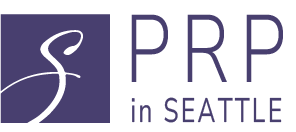Platelet-rich plasma (PRP) injections, commonly known as “P-Shot” were initially used in sports medicine but their scope has widened over time, and today, these are being used in men’s health clinics for their possible benefits in tissue repair and improving circulation. If you’re considering non-drug treatments for erectile dysfunction (ED), cost is an important factor. Below, we break down how PRP works, what the research shows, and the key factors that influence pricing.
What is PRP Therapy for ED?
PRP is produced by spinning a small sample of your blood in a centrifuge to isolate platelets, then injecting the concentrate into the corpora cavernosa of the penis. Platelets release vascular endothelial growth factor (VEGF), platelet-derived growth factor (PDGF), and other cytokines that encourage angiogenesis and nerve regeneration, key ingredients for reliable erections as stated in a report by PubMed.
Clinical evidence is still evolving. A 2023 double-blind, placebo-controlled trial (n = 60) found that two PRP sessions were safe but did not outperform placebo at six months. By contrast, a 2024 meta-analysis of three randomized trials reported a mean International Index of Erectile Function (IIEF-EF) improvement of 3.3 points over placebo and no serious adverse events
What does that mean for you? Well, it shows that results are promising but not guaranteed, and realistic expectations are essential.
Average Cost of PRP for ED
The cost of PRP therapy for ED can vary widely depending on factors such as location, provider expertise, and the number of sessions required. On average, the cost ranges between $1,000 to $3,000 per session. Some clinics may offer package deals for multiple sessions, which can bring down the per-session price.
While the upfront cost may seem high, it’s important to consider that PRP therapy is a one-time or periodic expense compared to the ongoing costs of medications.
Factors Affecting PRP Costs
- Geography & Overhead: Larger metro areas with higher labor and facility costs tend to charge more than suburban or rural clinics.
- Provider Expertise: Board-certified surgeons or urologists with specialized training often command higher fees but may also offer greater precision and safety.
- Number of Sessions: Some patients see gains after one injection; others need a series for optimal collagen remodeling. The total cost increases with more sessions.
- Add-On Services: Some clinics combine PRP therapy with other treatments, such as shockwave therapy or hormone optimization, which can increase overall costs.
Is PRP for ED Covered by Insurance?
Because the FDA has not cleared PRP for ED and long-term efficacy data are limited, insurers classify the procedure as investigational. Plans rarely reimburse. Sarasota Surgical Arts partners with health-care lenders that let you spread payments over six to 24 months, and many patients use pre-tax health-care accounts to offset part of the expense..
Is PRP Therapy Worth the Cost?
The results from PRP for erectile dysfunction vary from person to person. Some men have reported significant erectile function, while others have experienced very low effects. PRP is mostly effective for those with mild ED and who want to address underlying health issues like diabetes or vascular diseases.
Compared to other treatment options, PRP is low-risk, minimally invasive, and offers the potential for long-term benefits without the need for daily medication. If these advantages align with your goals and budget, PRP therapy could be a worthwhile investment.
Final Thoughts
PRP therapy offers an intriguing, biologically based option for ED with a U.S. price tag that typically falls between $3,000 and $7,000 for a full treatment course. Weigh the cost against the potential upside of drug-free, minimally invasive improvement. Most importantly, discuss your candidacy with a qualified specialist who can compare PRP to evidence-backed alternatives and design a plan tailored to your goals, health profile, and budget.


